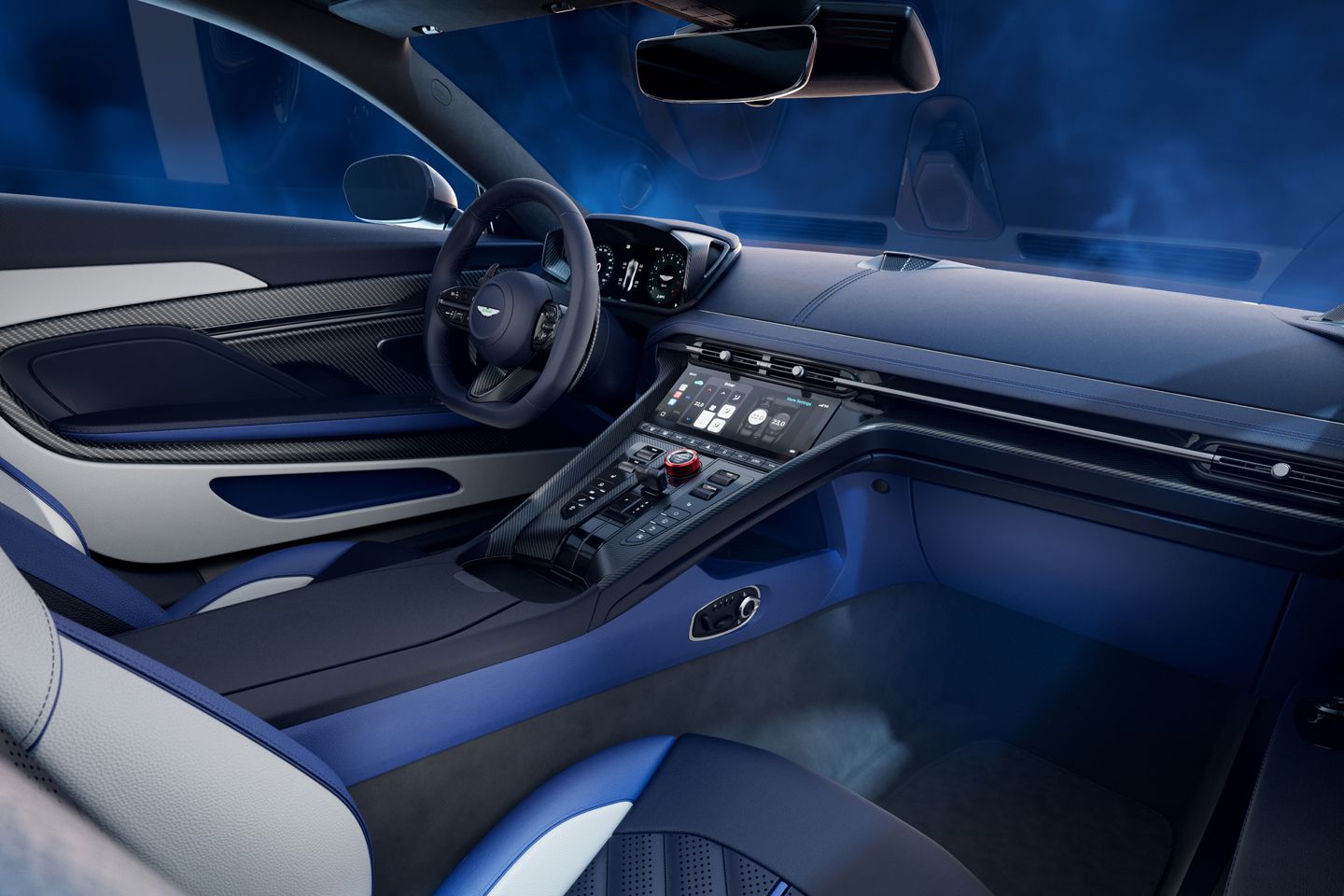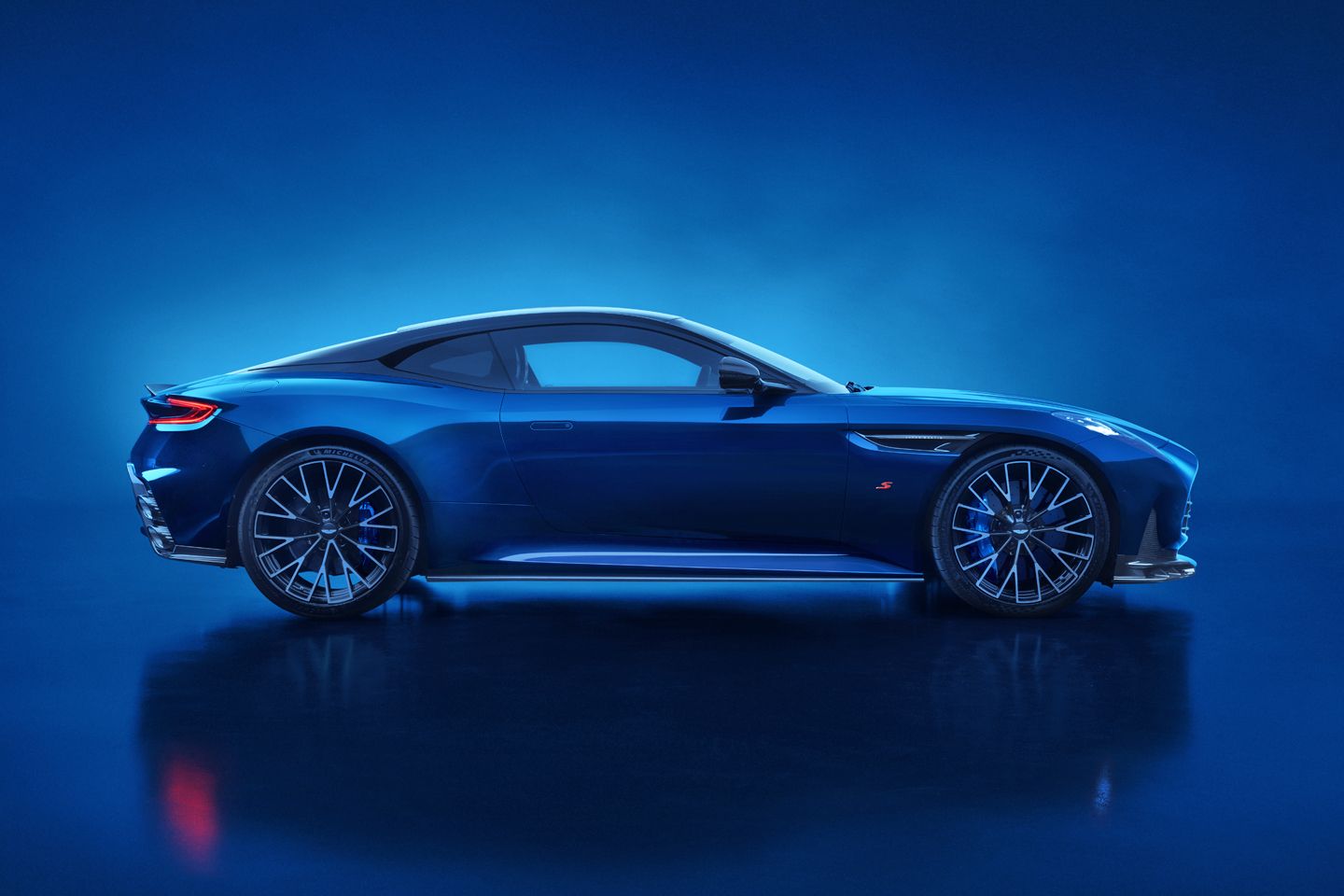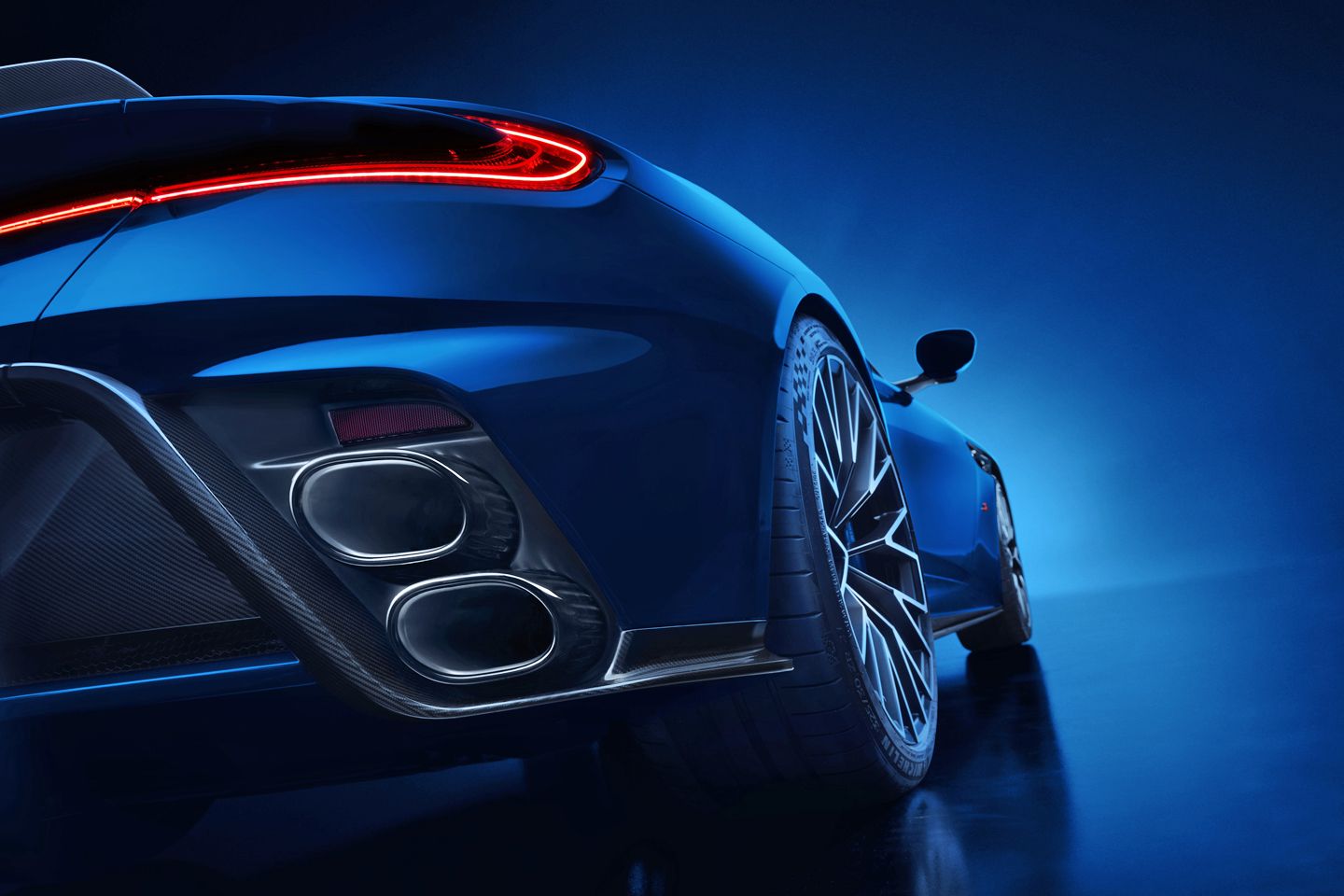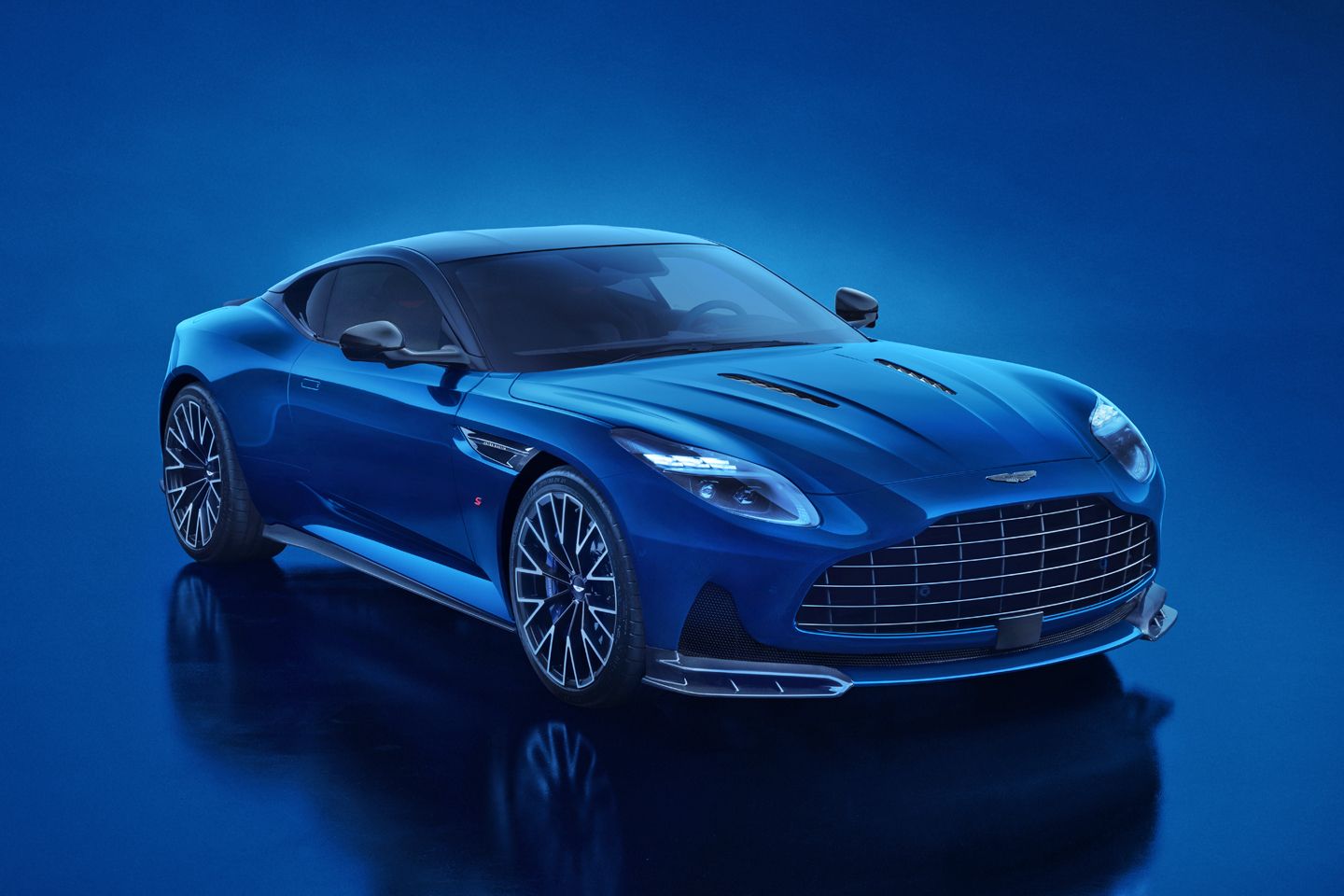
Well, that didn’t take long. No sooner are we done ushering the new flagship DBX onto its 727hp pedestal than the next S-badged Aston Martin appears. Of course, with the Vantage already lined up, it was virtually a foregone conclusion that the firm’s Super Tourer would follow – especially when the DB12 S helps bridge the gap to the astonishing (and astonishingly expensive) 835hp Vanquish.
To that end, it gets 700hp from its 4.0-litre twin-turbo V8. Only 20hp more than the DB12 launched with – and 27hp less, clearly, than it deemed necessary for the DBX – yet sufficient, with the aid of an optimised launch control system, to shave 0.1 second from the model’s 0-62mph sprint time. Small beer, perhaps (peak torque remains fixed at 590lb ft), though it may prove less significant than the way the flagship looks – and how it sounds.
Much as it did with the DBX S, Aston has opted for a stacked configuration from its new quad tailpipe, and promised that the stainless steel system ‘has been tuned to accentuate the engine frequencies throughout the rev range for added depth and potency’. Or you can opt for the optional titanium alternative, which is said to increase the volume by 1.5dB while reducing the weight by 11.7kg. Potential no-brainer, that one.


Elsewhere, Aston has targeted a more progressive throttle response, which ought to complement the superior sense of connection it has apparently sought from the chassis. This is all in the settings, mind – the manufacturer talks of finessing the camber, toe and castor geometry – although alongside a recalibrated E-diff, it suggests the DB12 S owner will benefit from an increase in agility and precision, without sacrificing the model’s well-earned reputation for dynamic composure.
That said, it will almost certainly be the car’s one hardware change that delivers the most notable gains: the range-topper earns Carbon Ceramic Brakes as standard, which means a 27kg saving of unsprung mass. Additionally, the S benefits from the next generation of corner braking control system, meaning you’ll be able to brake later into corners while enjoying improved consistency (via torque vectoring) upon exit.
“The technology we introduced with the DB12 now allows us exceptional scope to explore a new depth of character and capability within the same vehicle platform,” reckons Director of Vehicle Performance, Simon Newton. “With DB12 S we have carefully engineered a host of detailed changes, which preserve signature levels of refinement, boost vehicle performance and amplify driver engagement.”


If the DBX S is any guide, Aston will be true to its handling guru’s word, without proving game-changing in any one facet. That much, instead, ought to be covered off by the new look, which introduces a dual-element front splitter, gloss black sill additions and bonnet louvres to distinguish the halo model from its stablemates. At the back, there’s a fixed rear spoiler, and, as you might expect, a new rear diffuser to better frame the rearranged tailpipes.
Naturally, a commensurate uplift in aerodynamic performance is promised, though clearly the changes are about delivering a bit more heft to the DB12’s visual presence. At any rate, that is where the most time and money have been invested; inside, the differences are mostly about a new choice of trim materials in monotone, duotone or tritone – although we do like the red anodised finish that has been added to the knurled rotary controller. But perhaps that’s just us.
If Aston had you at hello, then you’ll be delighted to hear that the DB12 S is available to order from right now, in both Coupe and Volante formats, with deliveries pencilled in for the first quarter of next year. We await confirmation of the asking price for either variant, although it’s probably safe to assume that it will overshadow the DB12’s 200-ish grand cost. For reference, the Vanquish costs around £330k. So less than that.

